Chapter 8. Speaking For Salmon
“I just I can't emphasize enough though how precarious the situation for winter-run Chinook is.”
– Jonathan Ambrose, biologist with the National Marine Fisheries Service
Listen and subscribe to The Spiritual Edge wherever you listen to podcasts - Apple Podcasts, Spotify, Google Podcasts.
By Judy Silber
About halfway up Mt. Shasta is a popular tourist destination. It’s a spectacular view and during the summer, people hike up here every day. But for the Winnemem Wintu, it’s a place so special, they only visit once a year. From a parking lot, a trailhead marks a dry, dirt path. A short hike takes a small group of us through a thin spruce forest. Then we come to the meadow where wildflowers bloom amidst heathers and wild grasses. At the top of the meadow is a fresh water spring. We gather around and settle in as Chief Caleen Sisk tells us the story about how the world began.
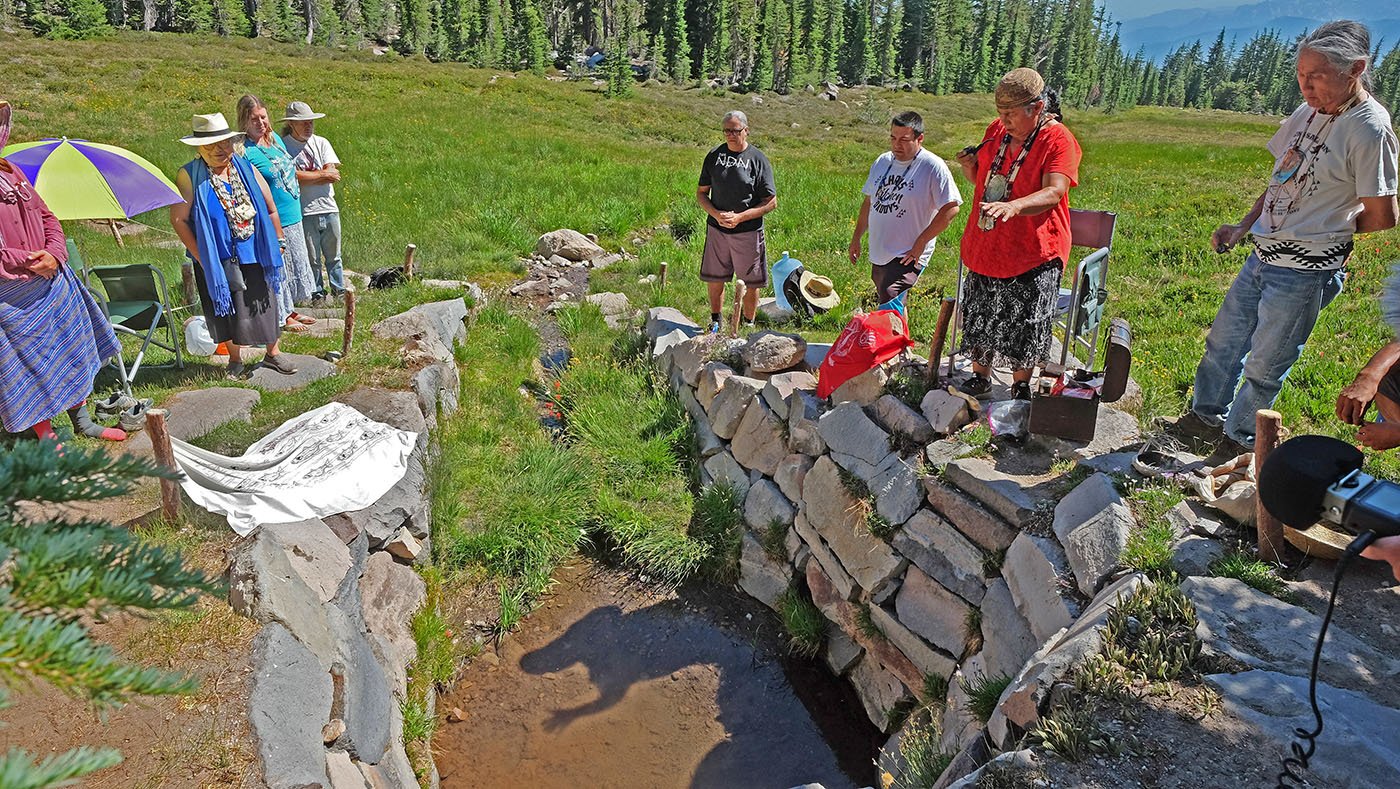
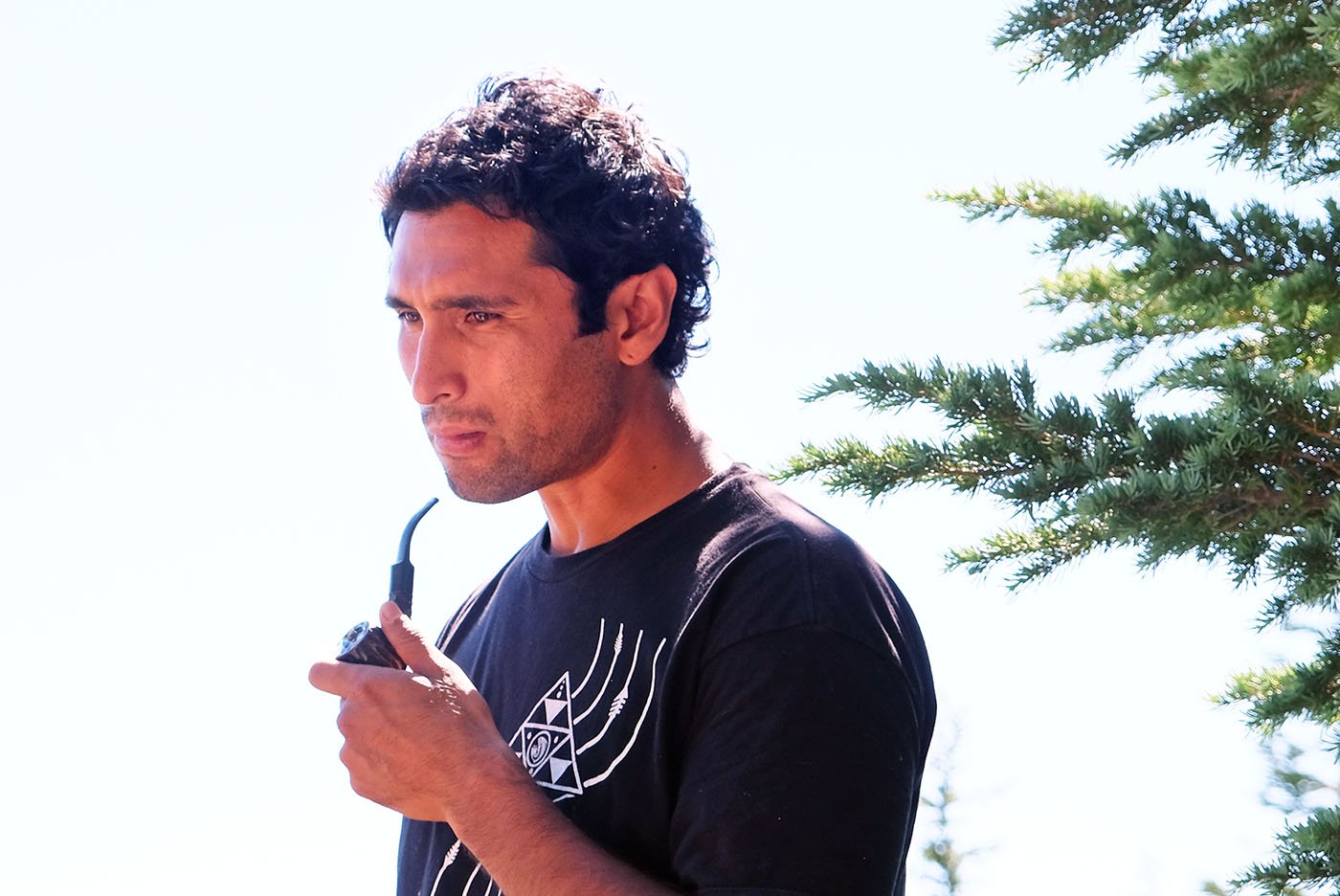
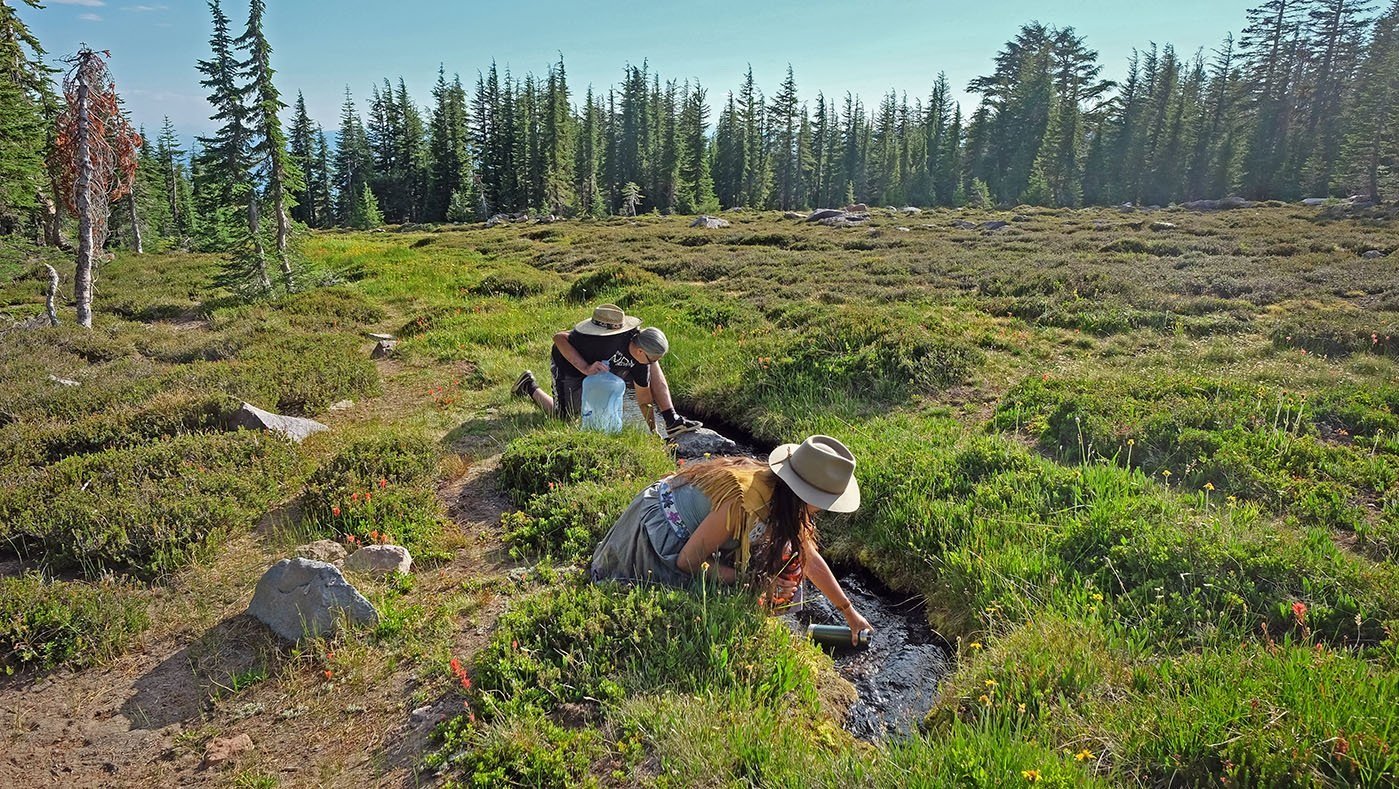
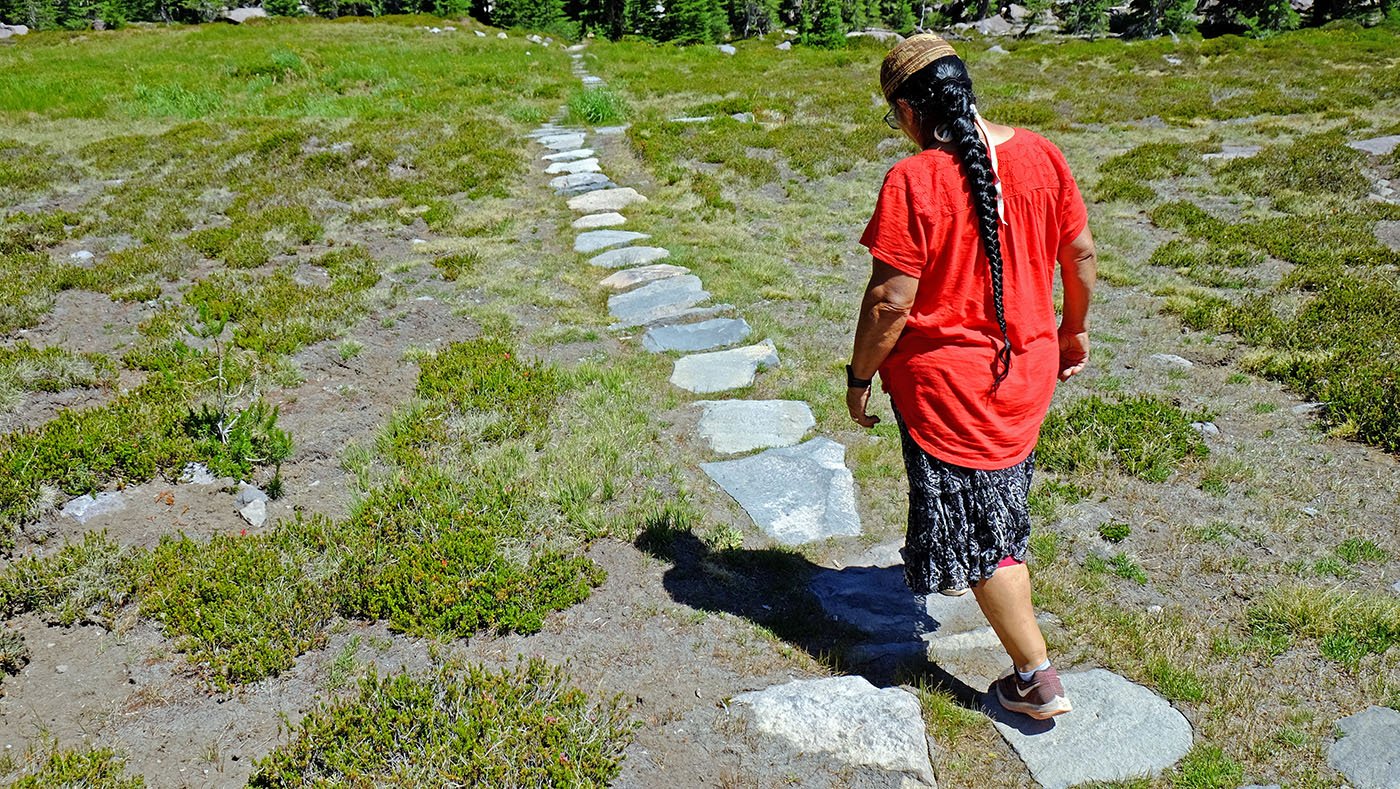
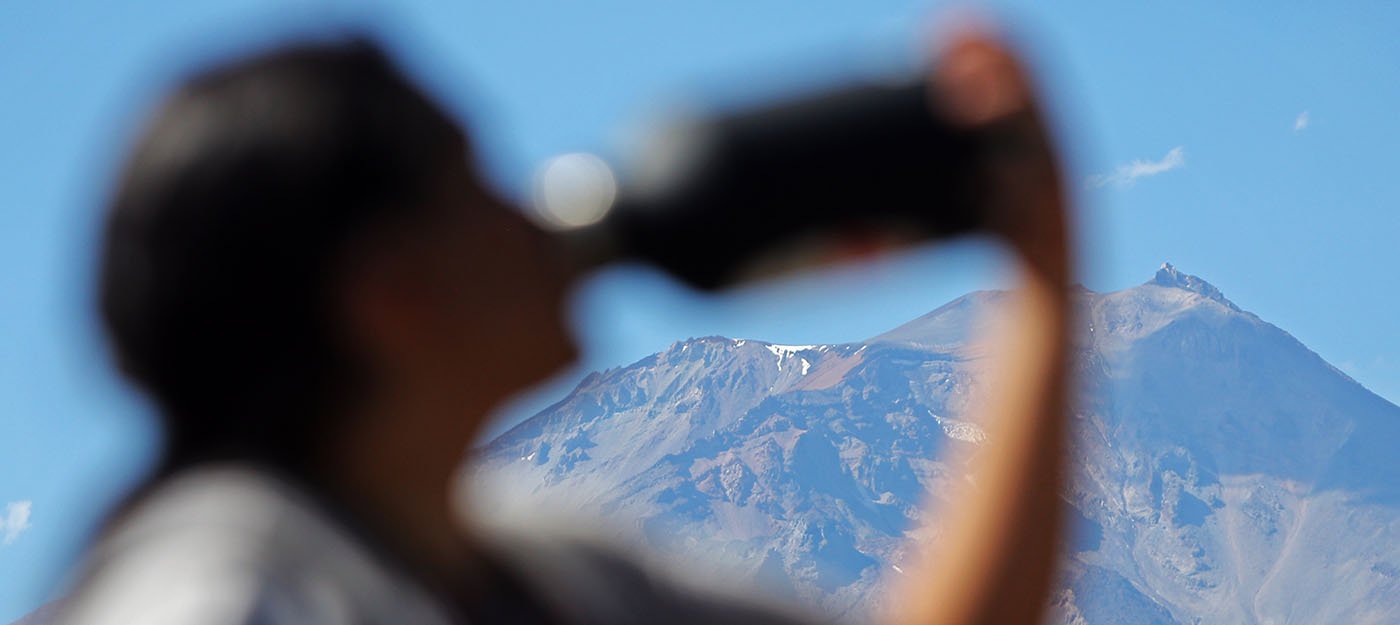
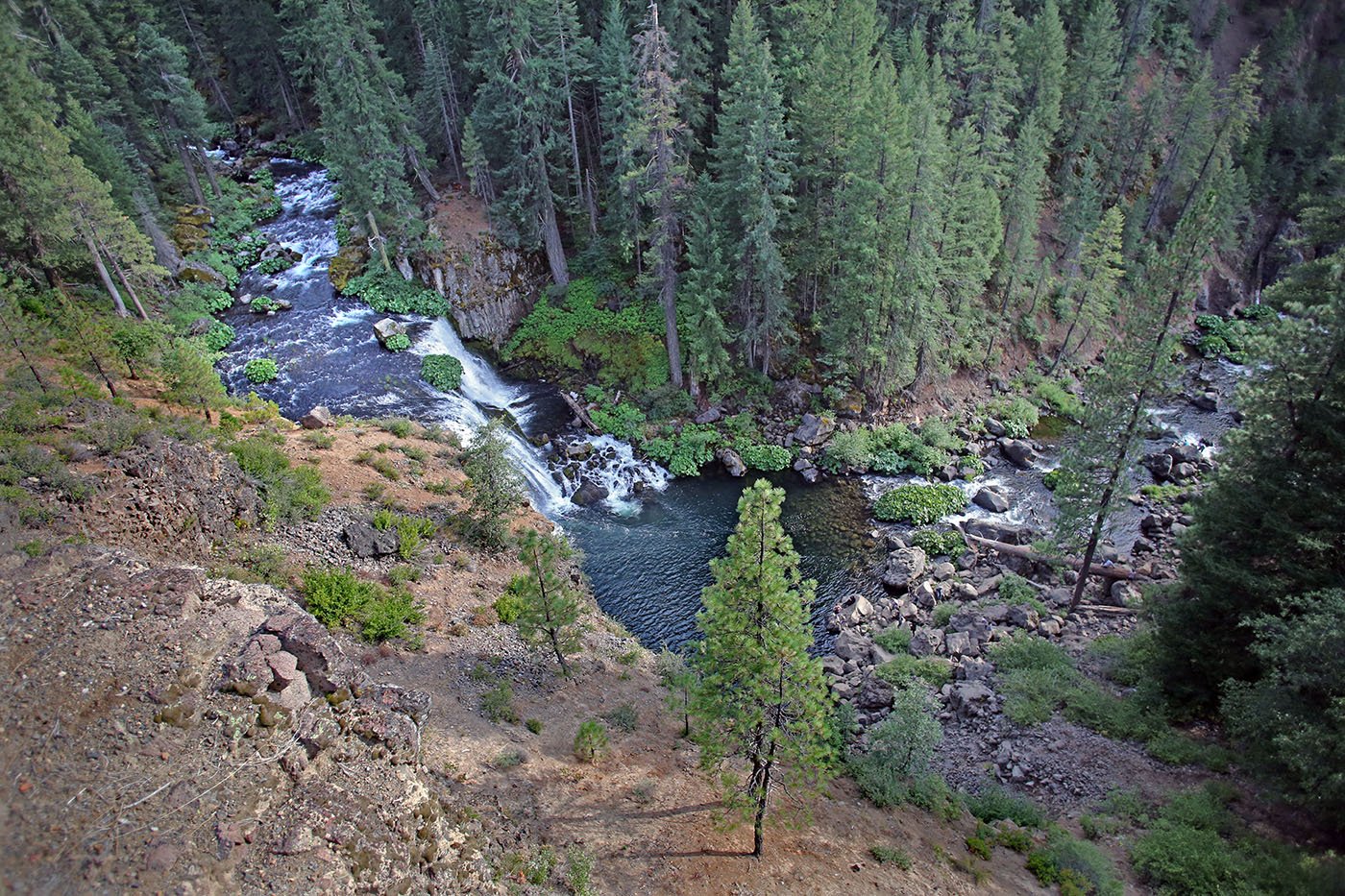
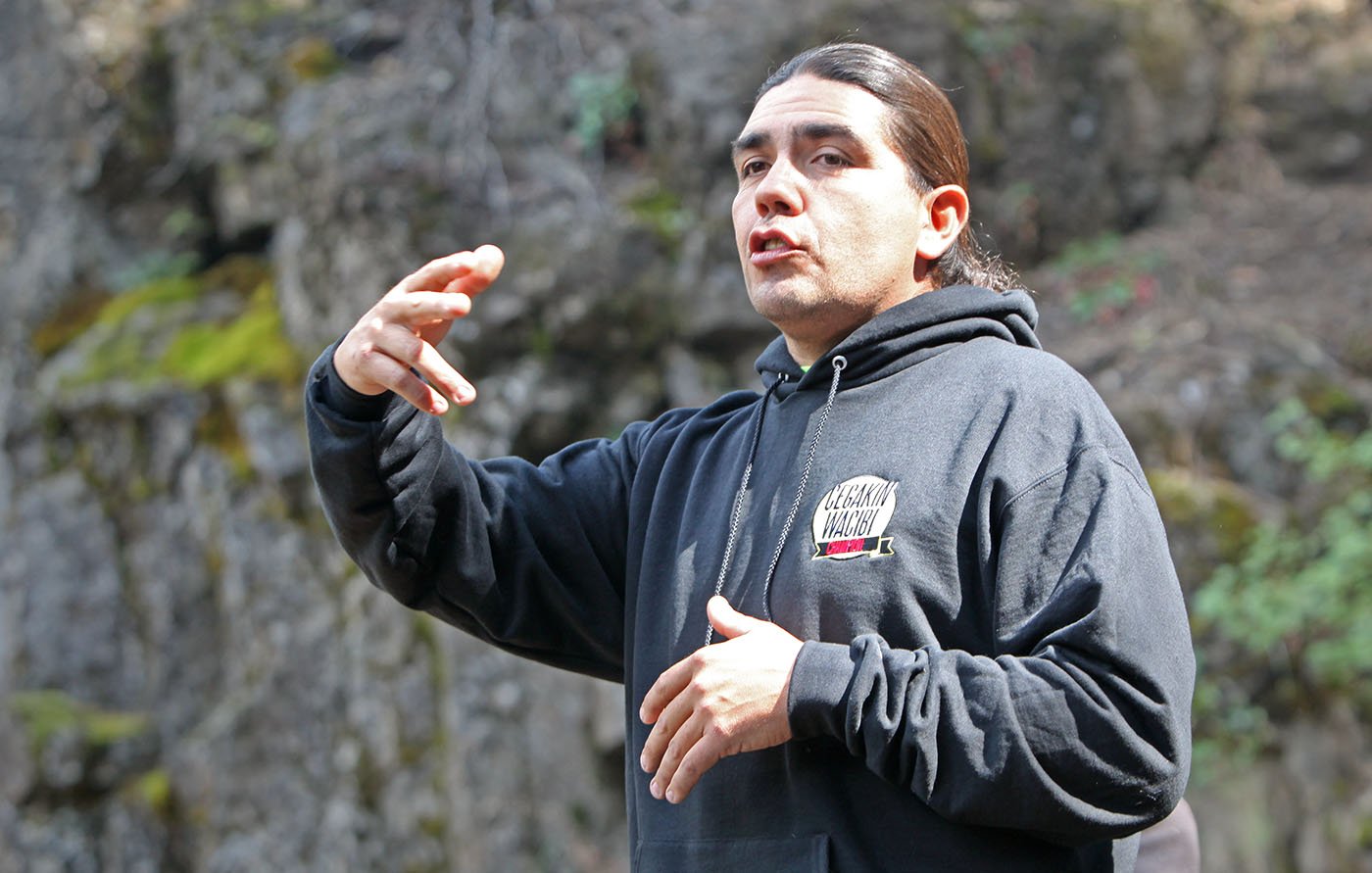
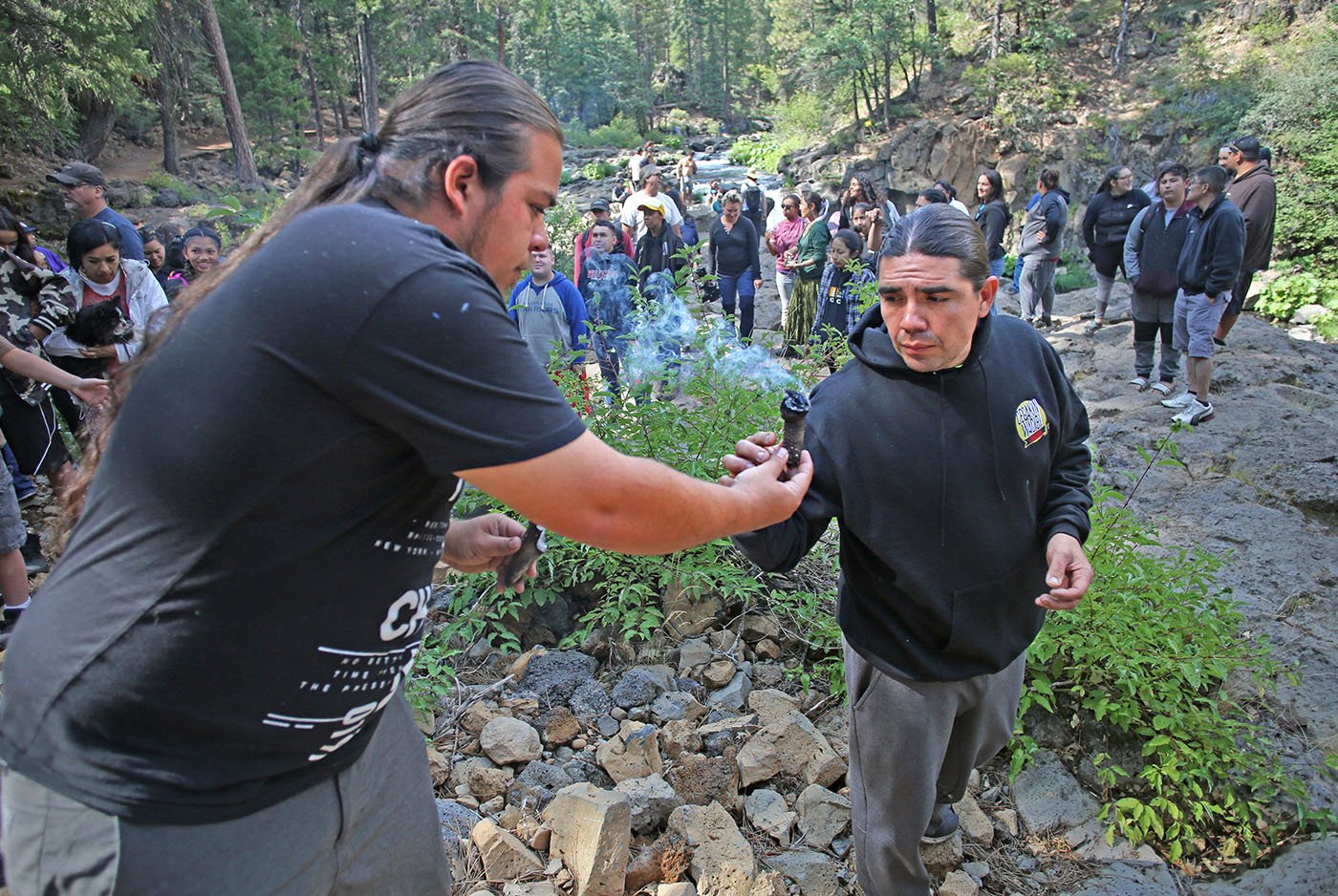
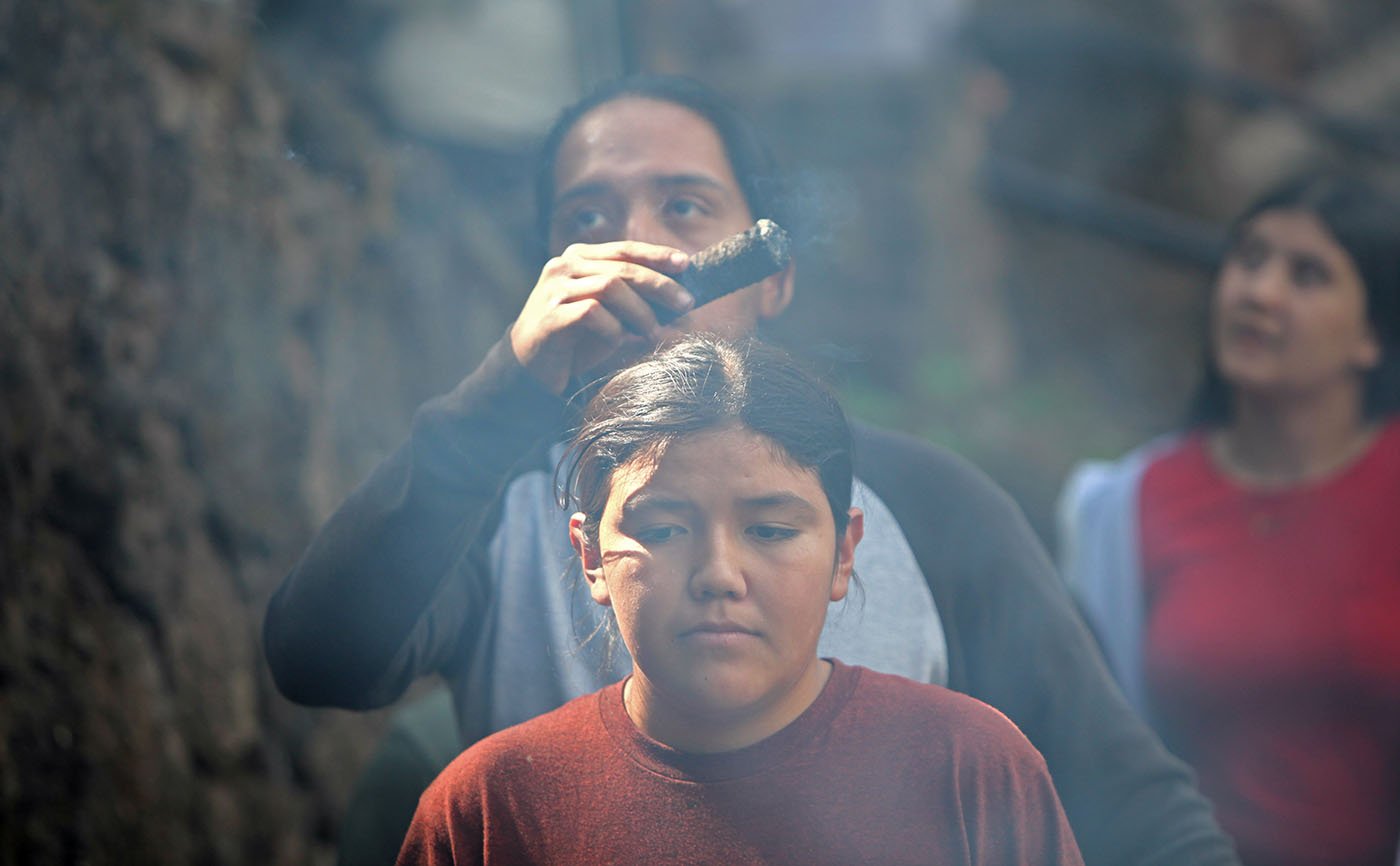
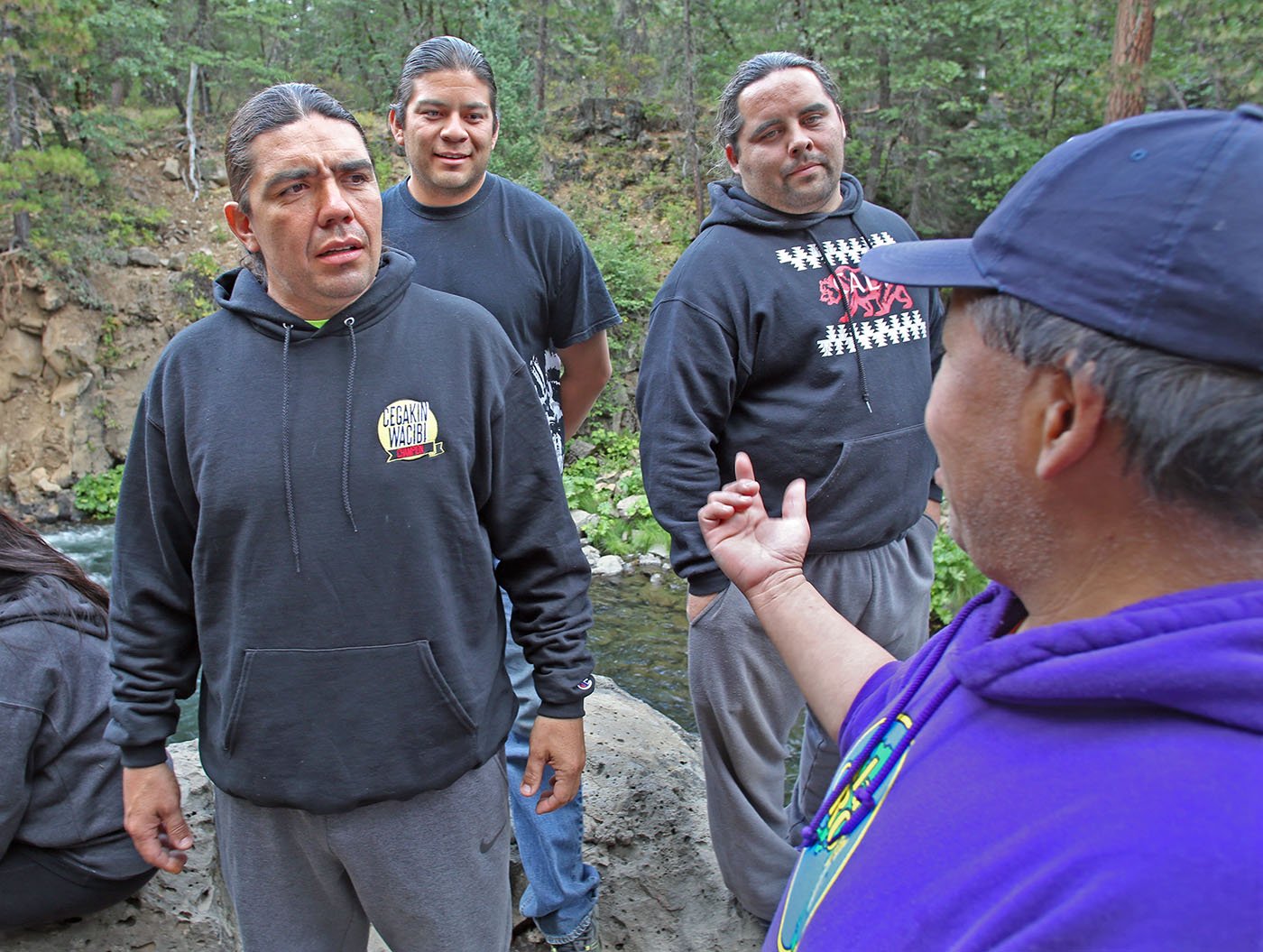
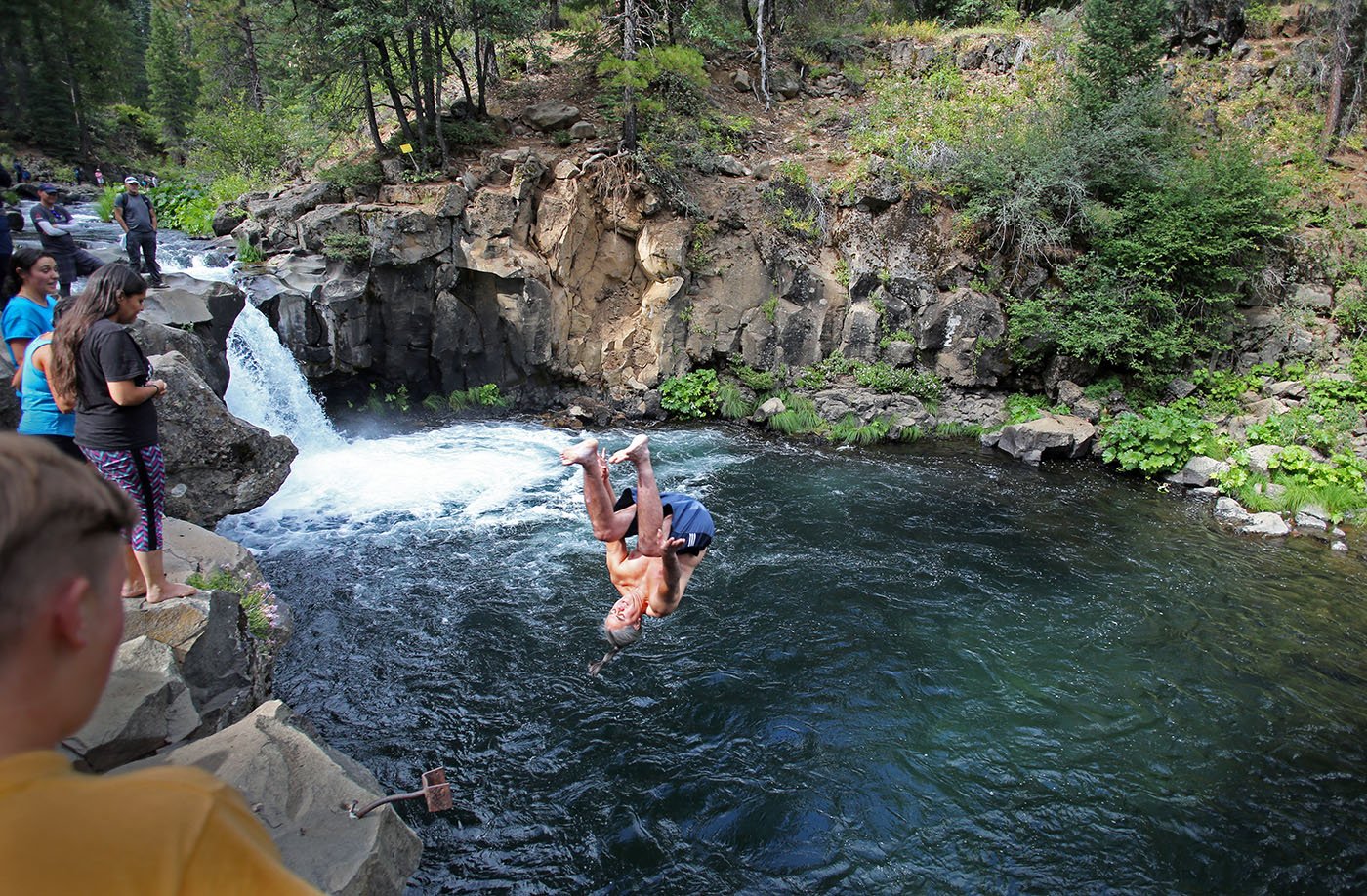
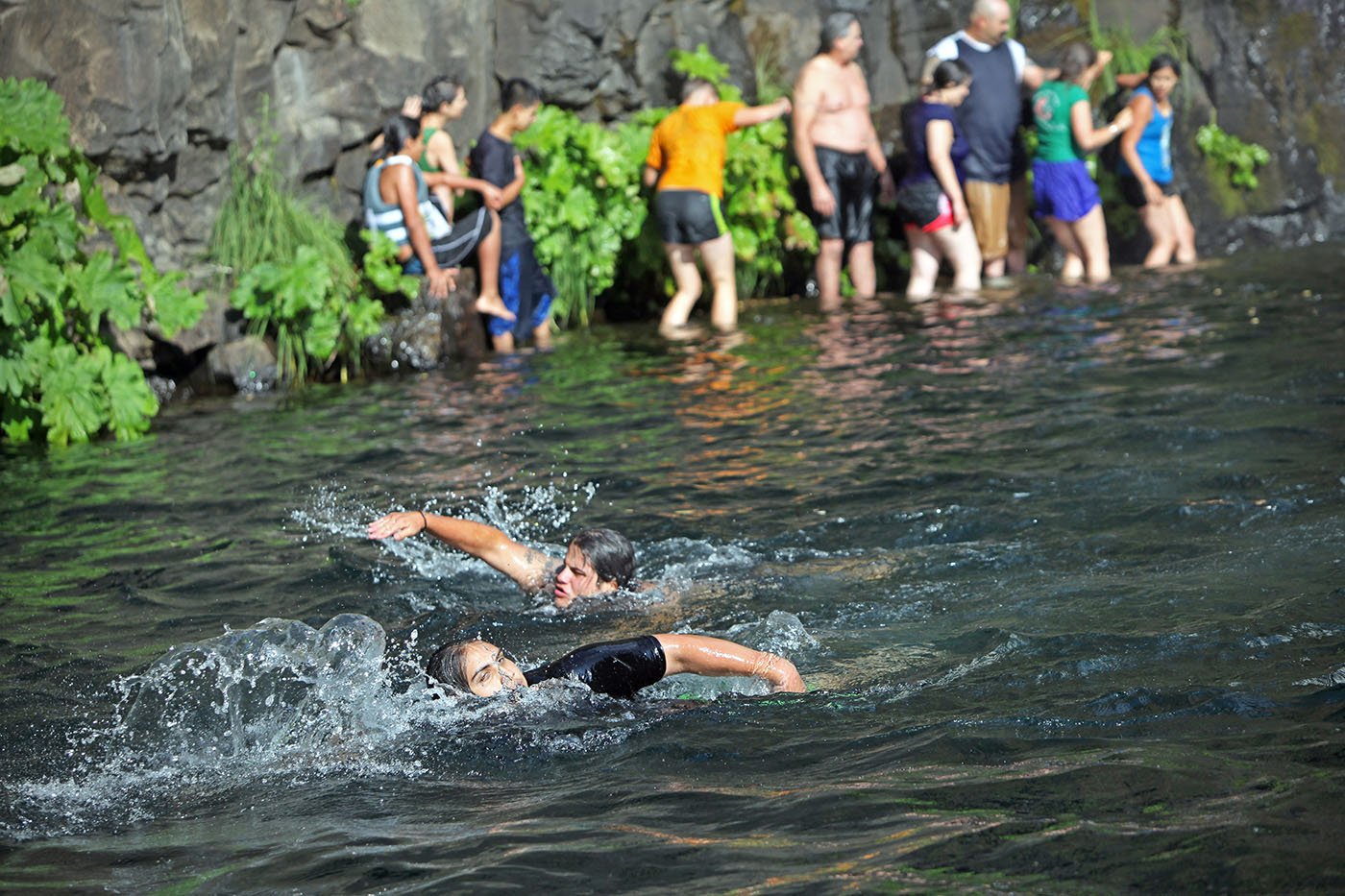
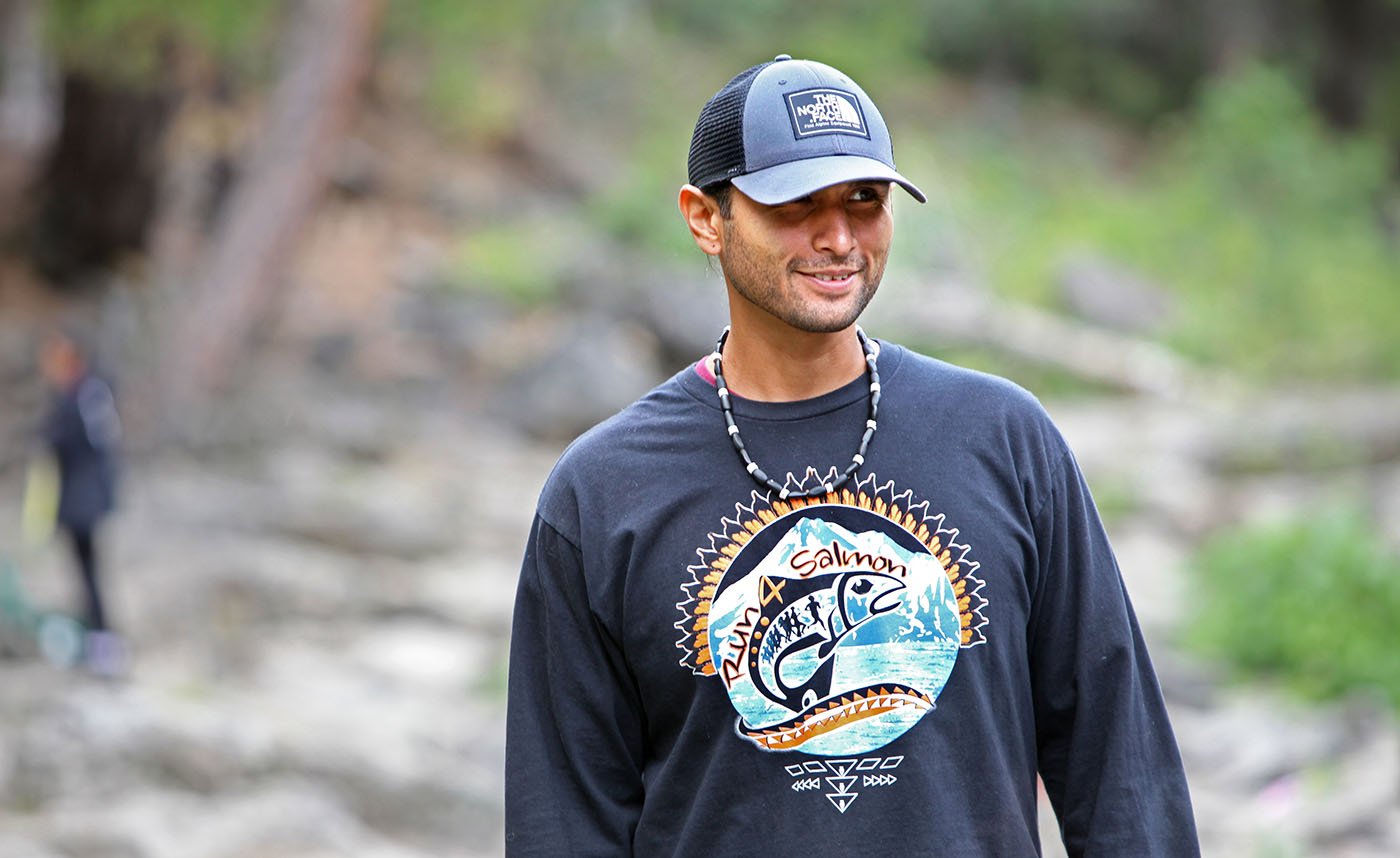
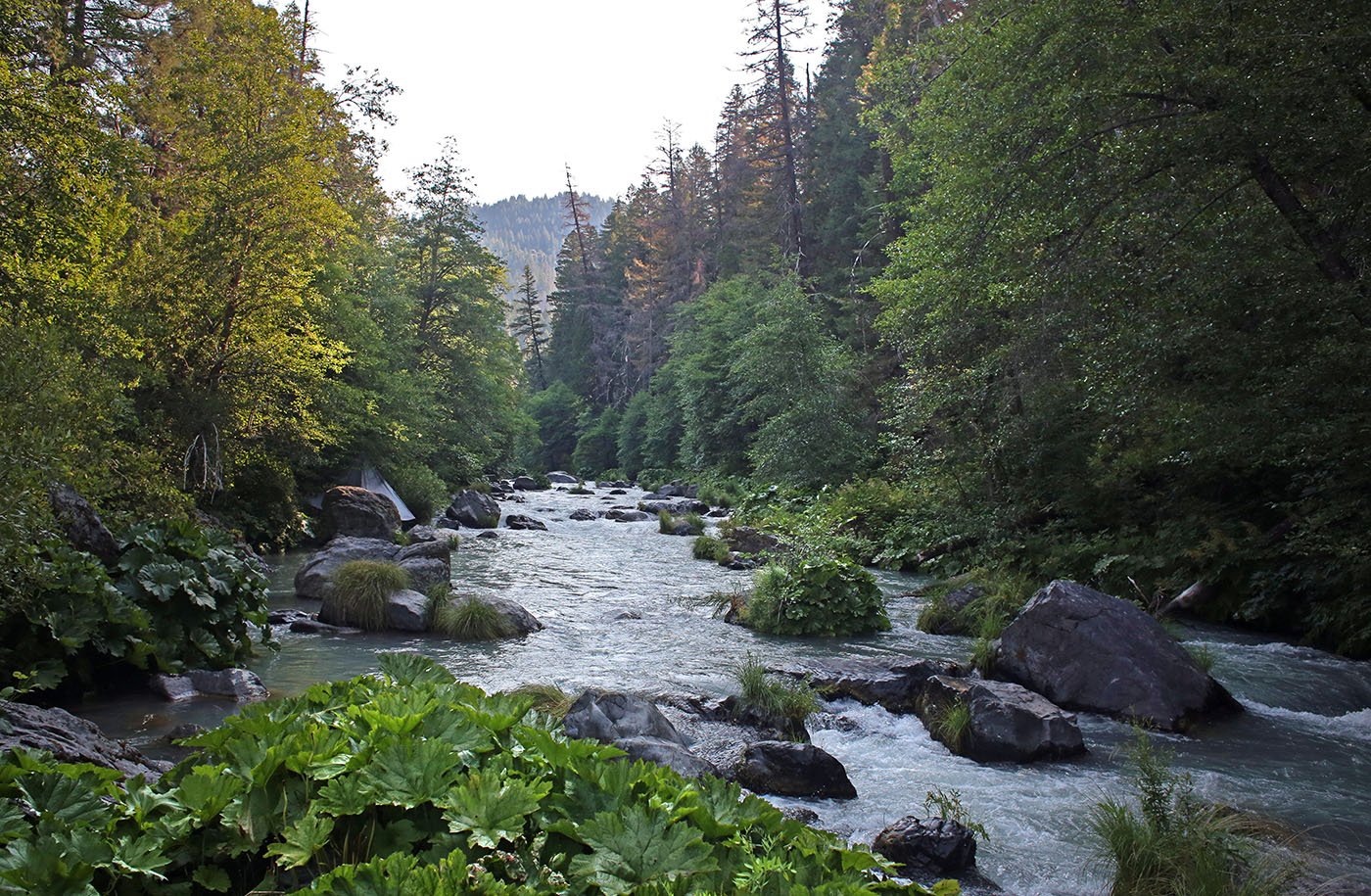
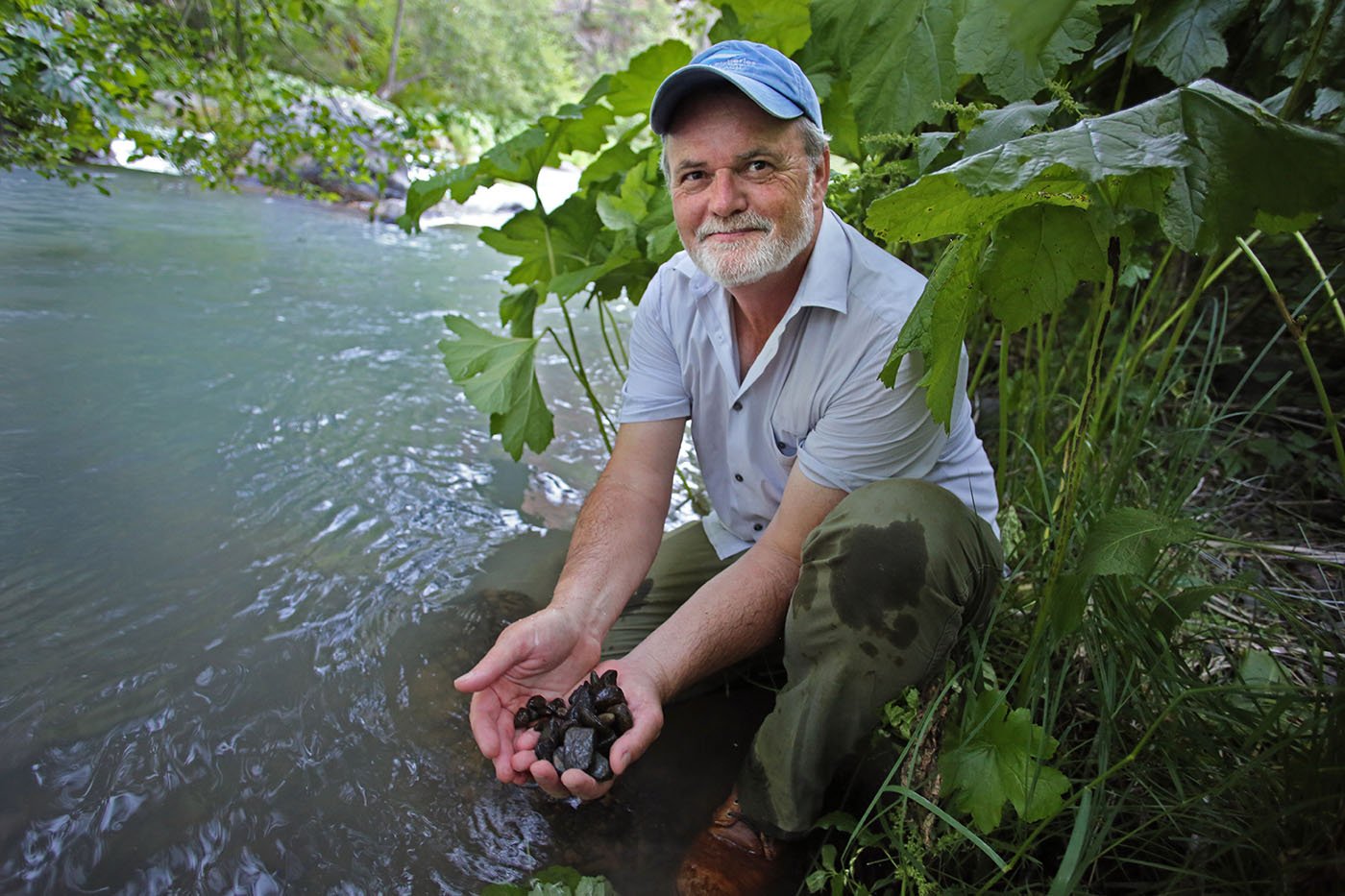
CHIEF CALEEN SISK: Everybody used to be inside this mountain as spirit beings. And then when the Creator created all of this out here, he wanted every spiritual form to take a physical form. And as they took their physical form, they came out of this doorway that goes into this mountain that has a sacred fire.
CHIEF SISK: And when they came out, they went down to do their jobs, whether it be the oak tree or the trout or the elk or moose or bear. And they all kept choosing. Hummingbird and mosquito and fly. Everybody had a job. Everybody was a part of everyone else’s life. There wasn’t anything that was not unconnected to the balance of this nature, this world.
CHIEF SISK: And then there was still one little spirit being in there, wondering what they should be. And finally, they chose to be human. And they come running out this door and wandering down the stream and the Creator looked at that human and said, that one is going to need a lot of help. It’s going to have a hard time figuring out what it’s going to do.
CHIEF SISK: Salmon not too far ahead of it, heard all of this going on.
CHIEF SISK: And as salmon listened to, the salmon came back and offered up his voice to this human so that the human could communicate with all things and try to get along that way.
CHIEF SISK: So since that time, we have had a relationship very close with salmon. And we are the speakers for salmon because they can no longer speak.
CHIEF SISK: We’re recognizing that, you know, these salmon, they’re the predictors of how healthy our water is. In the ocean and in the streams.
The Winnemem Wintu creation story helps explain the tribe’s deep connection to salmon. They’re family. And now, after 150 years of settler occupation, their fates are linked. Numbers of both salmon and the Winnemem Wintu have gone down sharply. But the tribe has faith that if salmon can recover, then so can they. So they fight — to keep the memory of salmon in their river alive, and for their return.
***
LYLA JUNE: To me, creation stories have many dimensions.
SILBER: Lyla June Johnston, this is a big area of research for you. A lot of of us think about indigenous creation stories as myth, or being mythical. But is there also history embedded in them?
SILBER: When we dismiss these creation stories as mere myth, we forget to look at the deeper messages that they’re saying. And a lot of times, they always start with, we’ve been here since time immemorial. Indigenous peoples will say that all across this land. Because we actually have been here for so long that it doesn’t make sense to count the years anymore. We’ve been here for the time it takes for a people to truly be of this place.
SILBER: So creation stories include this historical aspect of, as you said, saying that indigenous people were here since time immemorial. But don’t they also represent cultural and moral values?
LYLA JUNE: Absolutely. Indigenous creation stories are embroidered with all of these really interesting lessons and values and they teach us how to live life. So it’s not just about the historical significance or how they tie us to place, but they also show our children, like a blueprint, of how to be human. For example, some of these creation stories talk about humility. In the sky creation story, you know, she falls from the sky, lands on a turtle’s back and creates this land mass off the turtle’s back that we now call America. And what that story is also teaching is we come from women. That women are sacred. Women are the foundation of life. And so sometimes they teach us that animals are equal to humans. Sometimes these creation stories teach us that animals are even above humans. And almost all the time, these creation stories tell us that we are here to be stewards of the earth, stewards of ecology and here to protect these lands where Creator put us.
***
For the Winnemem Wintu, stewardship today means fighting to bring salmon back to their homelands on the McCloud River. In previous episodes, we told you about the Run4Salmon, an annual ceremony that explores all the obstacles salmon are up against. But there’s much more to the story. War dances, border crossings, trucks carrying fish and ultimately, to everyone’s surprise, salmon eggs hatching in the McCloud. But before we get ahead of ourselves, let’s go back in time, thousands of years when the rivers of the Pacific Northwest and California teemed with many millions of migrating Chinook salmon.
I wanted to understand what happened from then to now. so i contacted Jim Lichatowich, a longtime fisheries biologist and writer who lives in Oregon. On a Zoom call, he holds up a graph.
JIM LICHATOWICH: Okay, I've got basically it's a, it's a picture that I drew up based on several scientific papers that gives the 10,000 year history of salmon.
He tells me salmon evolution started much earlier, at least 40 million years ago. But the graph in his hands focuses on what happened in the last 10,000, in the Pacific Northwest states of Oregon, Washington, Idaho and Northern California. On the far left, it shows a squiggly line that goes up and down. With the Ice Age ending, ice was melting. Rivers were starting to reappear. Forests were growing. And salmon, they started to spread out. They became central to the economies and cultures of Native American tribes.
LICHATOWICH: And so all three ended up co-evolving together — the rivers, salmon and Native Americans. And I think it was that long history of co-evolving, that allowed about 7,500 years of very stable use of salmon by Native Americans.
For thousands of years, salmon numbers stayed pretty steady.
LICHATOWICH: And then…
Then they dropped. Jim Lichatowich points to what looks like a waterfall on his graph.
LICHATOWICH: The graph shows a straight line, almost absolutely straight down, representing the last 150 years of management by Euro-Americans. Right. And it's the, it's the only way to show the catastrophe of that management by putting it in the context of what happened in the last 10,000 years.
The Winnemem Wintu live that catastrophe every day. Scientists estimate that before the Gold Rush, one to two million Chinook salmon migrated the waters of the Sacramento-San Joaquin Basin. That includes the McCloud River, which was a major spawning ground. The basin hosted a diverse population, like no other in the world. Four genetically different Chinook populations came back from the ocean — in the fall, late fall, winter and spring. Then drastic changes such as Shasta Dam, made a mess of the natural cycles.
CHIEF SISK: uh, well, the salmon are all in a crash. All runs.
Chief Caleen Sisk.
CHIEF SISK: The winter run is pretty much gone in my mind. They have them on the endangered species list. The spring run is almost on the endangered species list. The fall run is the only one that’s sort of surviving, but not in any numbers that we were used to.
DOUG SCHOLFIELD: This is our original ancestral homeland of the Winnemem Wintu. These are our hunting grounds, our fishing grounds.
Doug Schofield stands before a group of about 25 people assembled on a rocky ledge. We’re high up on the McCloud river—what used to be a last stop for salmon, about 10 miles from the base of Mt. Shasta where the river winds its way through a canyon lined with tall pines.
SCHOLFIELD: Back in the day, this is where the salmon would come up the river.
In the old days, the Winnemem Wintu would light fires along the river to help salmon find their way and if waters ran low and the fish got stuck, they’d help them move upstream. Salmon may no longer swim in the McCloud River, but the Winnemem Wintu refuse to let their memory die. Every year in late summer they hold a ceremony where they act as stand-ins for the fish.
SCHOLFIELD: We’ll smoke everybody off and then we’ll jump in three different falls all the way up. We’ll do that in honor of the salmon. This is the beginning of one of their harder journeys. They started off in the ocean. They came all the way up. Throughout their lifespan, they got to go through all these different trials and tribulations, just like us. So it lets us think about the life of these salmon, what they got to go through in their struggle.
Doug’s cousin Jerod Ward is also here.
JEROD WARD: So at each one of the falls, we do something different. At the first one, we jump off to kind of signify the way that they have to swim up the falls. At the second one, we go underneath the waterfall, which is what they do, just to feel the same things they do and then at the third one, we dive down to get a rock, which is to signify when they are ready to spawn, that they’ll have to move the rocks out of the way in order to lay their eggs.
At the first falls, those who are brave enough, jump from a high rock into a deep, cold water pool. It’s a big jump, maybe 15 feet. Dr. Dennie Schultheis, or just Dr. Dennie as people call him, Is Winnemem Wintu by way of his grandfather. He stands barefoot in shorts at the ledge and stares down, into the aqua green where salmon used to swim.
DR. DENNIE SCHULTHEIS: Am I scared? A little, just for the cold. Honestly, yeah.
He’s in his late 50s and a little worried about his heart.
DR. SCHULTHEIS: Because I have a little AG. I’m working on my E. I’m worried about my little thump, thump, thump.
DR. SCHULTHEIS: You tend to think about the purpose and why we’re here and the fish. Salmon coming up. So, and encourage other people at least to think about it and step outside their comfort zone.
Visitors lounging on the basalt rocks here likely have no idea how abundant salmon used to be. Or that none of the four different Chinook species are doing well in the wider Sacramento-San Joaquin Basin. As Chief Caleen told us before, the winter-run fish are the worst off. They’re on the endangered species list.
JONATHAN AMBROSE: I just I can't emphasize enough though how precarious the situation for winter-run Chinook is.
This is Jonathan Ambrose. He’s with the National Marine Fisheries Service, which is part of NOAA, the National Oceanic and Atmospheric Administration. It’s the agency responsible for keeping the winter-run around. He says their life cycle depends on high, cold mountain water, but because of Shasta Dam they can’t get to those places. A hatchery helps breed the fish. The intervention isn’t enough. Climate change and California’s drought are making the situation even worse. He says in 2020, drought conditions wiped out about 85 percent of winter-run salmon eggs. In 2021, it got worse.
Practically no eggs survived. A few more drought years and this species of salmon could go extinct. Jonathan Ambrose says the winter run’s survival depends on getting them back into cold water, such as that on the McCloud. But how? How do you get them around the immensity of Shasta Dam?
AMBROSE: Getting a fish over a 20 foot dam, that's pretty easy. Getting a fish over a 500 foot tall dam. Nobody does that. That's very, very difficult. We just didn't have that expertise.
Back in 2009, a federal evaluation of the state’s big water projects concluded that to survive, endangered winter-run needed to be reintroduced to habitat above Shasta Dam. That these waters could offer a necessary refuge from climate change. So for more than decade now, the National Marine Fisheries Service, along with other federal agencies has been planning. Dealing with regulations. And Permits. They’ve had a lot of questions to sort through.
AMBROSE: For example, we weren't sure. Is the McCloud better? Or is the upper Sacramento River better? Which one do we focus on? We had to do a habitat assessment, these things take some time.
In the end, they chose the McCloud River.
AMBROSE: You can’t ask for much better than this.
Jonathan Ambrose crouches on a small gravel bar next to the river. He scoops up gravel with his hands and holds it out for me to look.
AMBROSE: It’s beautiful. It’s beautiful. I know it looks like rocks. I know it looks like rocks, but it’s more than that. This is spawning success right here.
We’re maybe 20 miles downstream from where the Winnemem Wintu jump into those deep water pools for their salmon ceremony, but this is far more remote. To get here, it took a four-wheel drive vehicle to navigate a steep, rough dirt road. As we hike along a narrow path we are surrounded by forest, including cedars and Douglas firs. The river runs swiftly over boulders where skunk cabbage grows out of the rocks. Jonathan Ambrose says the gravel at the bottom is perfect for Chinook salmon.
AMBROSE: It’s not covered in dirt. When I take my hands away, they’re the same color. There’s no fine sand or sediment in here. There’s no clay. There is lots of rock and the fish would lay their eggs in here. And the cold water can flow through here, deliver oxygen to the eggs and the metabolic waste of the eggs are allowed to flush out.
On the drive here, we saw the towering peak Mt. Shasta, called Bullium Puuyuk by the Winnemem Wintu. Its snow melt percolates down through the area’s porous rock, and then deep into the aquifer. Decades later, the cold water bubbles back up into the McCloud.
AMBROSE: When I first saw this river, I thought, how can this not work? Let’s just get the fish up here and see what happens.
The question is: how? It’ll take a lot of maneuvering. Here’s the government’s plan: salmon migrating up the Sacramento River will be trapped, just below Shasta Dam. By truck, they’ll be brought to a hatchery and bred. Workers will then drive or helicopter fertilized eggs over to the McCloud River. The eggs will hatch in those cold waters and begin to swim downstream. But of course, they can’t get around Shasta Dam. So the juvenile fish will have to be caught and brought to a spot below where they can continue swimming on their own out to the ocean.
AMBROSE: Yes, yes. I’m thinking they were here 80 years ago and they’ll be here again. And I do see salmon in this river. And I do strongly believe they will thrive once they’re in this cold water.
That day on the river, I could feel the hope of once again seeing salmon in the McCloud. It’s also a long-time goal of Chief Caleen Sisk’s. But all of the waiting and endless discussions have eroded her ability to trust in government agencies. For years, she tried to get on the so called Interagency Fish Passage Committee, and was refused, because the Winnemem Wintu are not federally recognized as a tribe. It’s been a lot of bureaucracy to deal with. And a lot of scientists who always say they need to know more.
CHIEF SISK: You know, they don’t even know everything about salmon yet and how many years? Salmon don’t have that many years to give them…to learn more about salmon, right?
Her knowledge of salmon comes from growing up fishing with her elders, and wisdom passed down from her ancestors, who always had plenty of fish.
CHIEF SISK: Every day was a salmon day. And you know, you’re talking about a people who lived off the land and so you had some very stable foods that could be stored and could be carried over into times where food was more scarce to find.
CHIEF SISK: You know, you’d be eating two or three pounds a week. I mean, you could have the pumice that is the pounded flour kind of thing...you could carry it and eat it just like a powder. And put it in your acorn soup.
CHIEF SISK: And so, that’s different than the meat, different than the head or the cheeks of the salmon, which have different nutrient values to it and a different taste to them. So it’s not just like oh, I’m really tired of eating salmon. I mean, that’s what they lived off of. And from my tribe, it’s like that was the way it was up until the Shasta Dam came.
Chief Caleen wants salmon back in the McCloud. But she’s not keen on the government’s idea to use winter-run hatchery fish. Instead, she’s set on a different source of eggs—from a wild stock. From a Chinook salmon population that’s really far away.
***
A Prayer for Salmon is a project of The Spiritual Edge at KALW Public Radio. Support comes from the Templeton Religion Trust, California Humanities, the Kalliopeia Foundation, Save Our Spirits and The Water Desk, an independent journalism initiative of the University of Colorado Boulder. We are produced on Ohlone and Coastal Miwok land.
Thank you to the Winnemem Wintu and the Run4Salmon community for welcoming us, our microphones and cameras into their midst. To contribute to the Winnemem Wintu’s nonprofit, go to sawalmem.io.
